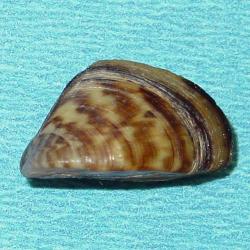Source Institutions
Source Institutions
Add to list Go to activity
Activity link broken? See if it's at the internet archive

Using zebra mussels (Dreissena polymorpha), elodea and an indicator dye, learners study the role of light in photosynthesis. A segment of the carbon cycle will be studied by setting up a closed system between plants and animals. Learners test for the presence of carbon dioxide using Bromthymol blue. This activity can be used to introduce pH, without using pH paper or a meter.
- 45 to 60 minutes
- 1 to 7 days
- $10 - $20 per group of students
- Ages 14 - 18
- Activity, Experiment/Lab Activity, Lesson/Lesson Plan
- English
Quick Guide
Materials List (per group of students)
- Florescent light
- Cardboard box for a dark location
- 8 screw cap culture tubes
- 4 zebra mussels
- 4 pieces of elodea
- Bromthymol blue solution
- Dechlorinated water (aquarium or pond water)
- Labels and white card
- Pen
Subjects
-
Life Sciences
-
Diversity of Life
- Plants
- Animals
-
Ecology
- Energy Flow and Chemical Cycles
-
Diversity of Life
-
Mathematics
- Algebra
-
Data Analysis and Probability
- Data Analysis
- Data Collection
-
Physical Sciences
-
Chemistry
- Acids and Bases
- Chemistry of Life
-
Vibration and Waves
- Light and Optics
-
Chemistry
-
The Nature of Science
-
The Scientific Process
- Conducting Investigations
- Gathering Data
- Formulating Explanations
- Communicating Results
-
The Scientific Process
Informal Categories
- Animals
- Nature and Environment
Audience
To use this activity, learners need to:
- see
- see color
- read
- touch
Learning styles supported:
- Involves teamwork and communication skills
- Involves hands-on or lab activities
Other
This resource is part of:
Access Rights:
- Free access
By:
- Culler, Bob
Rights:
- All rights reserved, Access Excellence @ the National Health Museum, 2009
